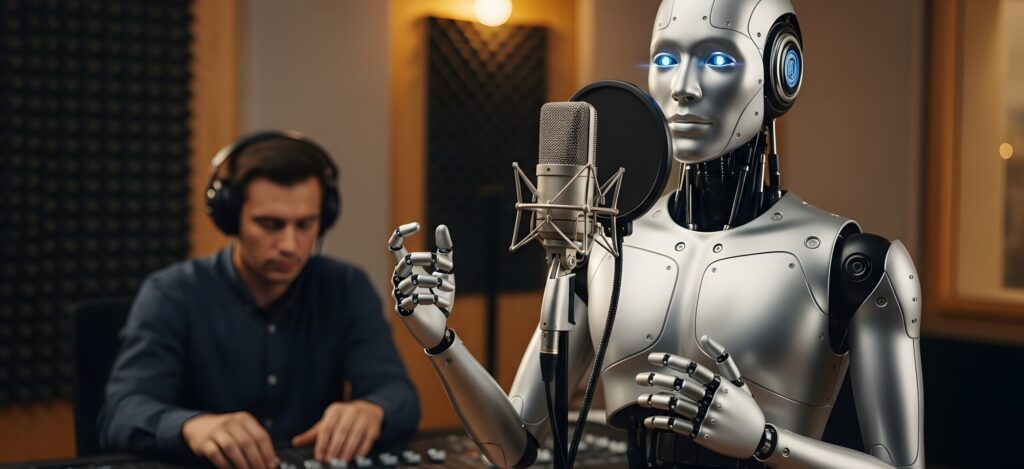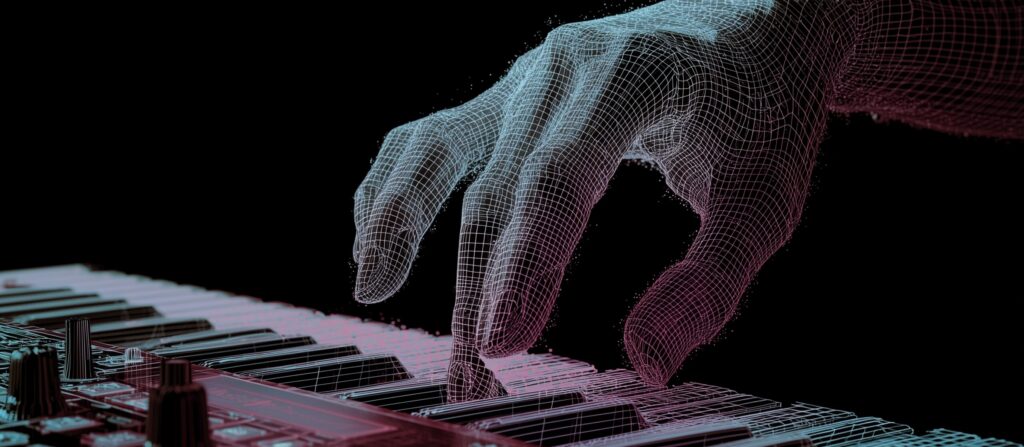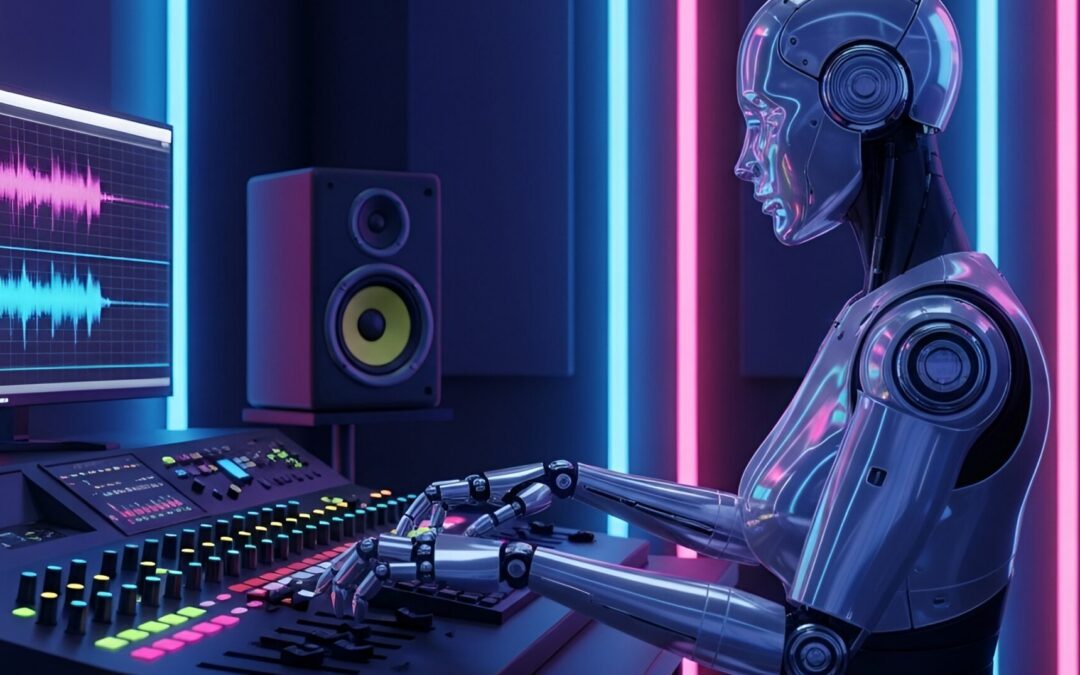An AI-generated country artist just hit number one on Billboard’s Country Digital Song Sales chart. The brooding cowboy voice behind “Walk My Walk” doesn’t exist. Breaking Rust is entirely synthetic. No human vocals, no traditional songwriter, no actual person. And this isn’t some one-off novelty act that’ll disappear next week.
At least one AI or AI-assisted artist has charted on Billboard every single week for the past month, according to the music industry’s definitive tracking. The trend isn’t slowing down. It’s accelerating. Some industry insiders see innovation. Others are watching what looks increasingly like an existential crisis for human musicians.
The Artists Who Aren’t
Breaking Rust emerged this fall with minimal fanfare, quickly accumulating over 2 million monthly Spotify listeners and 35,000 Instagram followers who watch AI-generated videos of a melancholy cowboy in various moody settings. The songs have generic titles like “Livin’ on Borrowed Time” and “Whiskey Don’t Talk Back,” featuring exactly the kind of grit-and-perseverance lyrics that country fans devour.
Then there’s Xania Monet, who made history as the first AI artist to debut on a Billboard radio chart. Her R&B ballad “How Was I Supposed to Know?” sparked a bidding war among major labels, ultimately landing a multimillion-dollar deal with Hallwood Media. The song went viral on TikTok, with users weeping to its lyrics about growing up without a father.
But Xania Monet was created by Telisha “Nikki” Jones, a 31-year-old poet from Mississippi who taught herself AI tools just four months ago. Jones writes the lyrics based on her life experiences, feeds them into an AI music app called Suno, and out comes a fully produced R&B track complete with soulful vocals and instrumentation. Jones insists the lyrics are “100% me,” even if the voice singing them is 100% synthetic.

Why It’s Working
The uncomfortable truth is that most people can’t tell the difference. A recent study by music streaming service Deezer found that only 3% of adults can distinguish between AI-generated and human-created music. Breaking Rust’s YouTube comments are filled with fans who either don’t know or don’t care that it’s AI. “I’m sorry, I can’t help what I like,” wrote one listener. “I like the song, no matter who created it.”
The songs themselves follow proven formulas. Breaking Rust sounds like every mainstream country hit you’ve heard, with just enough grit to feel authentic. Xania Monet channels the emotional vocal style of established R&B artists. They’re designed to slot perfectly into existing playlists without raising red flags.
The economics are impossible to ignore, too. AI artists don’t need tour buses, don’t develop substance abuse problems, don’t get pregnant, don’t have creative differences. They’re predictable, scalable, and infinitely malleable. For labels watching their profit margins, the appeal is obvious.
The Backlash Is Real
Working musicians are, unsurprisingly, alarmed. R&B artist Kehlani posted a TikTok video declaring “nobody will be able to justify AI to me” and “I don’t respect it.” When Xania Monet’s success made headlines, SZA and other established artists voiced concerns about what this means for human performers trying to make a living.
“AI bands are going to make it even harder for real human artists to break through and get a following,” warned Jason Palamara, a music technology professor at Indiana University. Lucas Woodland of the rock band Holding Absence put it more bluntly: real musicians will “stop existing” if AI artists continue gaining traction.
The authenticity problem cuts especially deep in country music, a genre built on storytelling and genuine connection between artists and fans. You can’t really connect with an artist who literally doesn’t exist. The most popular “story” becomes one manufactured by an algorithm rather than lived experience.

What Spotify’s Doing (Sort Of)
Spotify recently announced new protections and transparency measures, promising to label songs when AI played a role in vocals, instrumentation, or production. They’re partnering with major labels to develop “responsible AI products.” But they’ve stopped short of banning AI music entirely, arguing that “music has always been shaped by technology.”
Translation: they’re hedging their bets. AI uploads to streaming platforms now exceed 50,000 per day. The genie isn’t going back in the bottle.
The Part Nobody Wants to Admit
Here’s the thing: this might just be the beginning. Breaking Rust and Xania Monet succeeded because they’re good enough. Not groundbreaking, not innovative, just competent and catchy in exactly the ways that streaming algorithms reward. As AI tools improve, the gap between synthetic and human artistry will narrow further.
Music executive Leslie Fram called it “a notable wake-up call but not yet an existential threat.” That “not yet” is doing a lot of work in that sentence.

The real question isn’t whether AI can make music. It clearly can. The bigger issue is what we lose when music becomes just another optimization problem, another product engineered for maximum algorithmic engagement rather than human expression. The cowboy on your playlist never actually walked through mud or heartbreak. The soulful voice never actually felt the pain it’s singing about. The emotional connection you’re feeling is to something that never existed in the first place.
The charts are filling up with synthetic voices. The algorithm is singing. And millions of people are listening, often without realizing what they’re hearing isn’t human at all. Whether that’s the future of music or just a passing trend remains to be seen. But right now, the momentum is undeniable.

